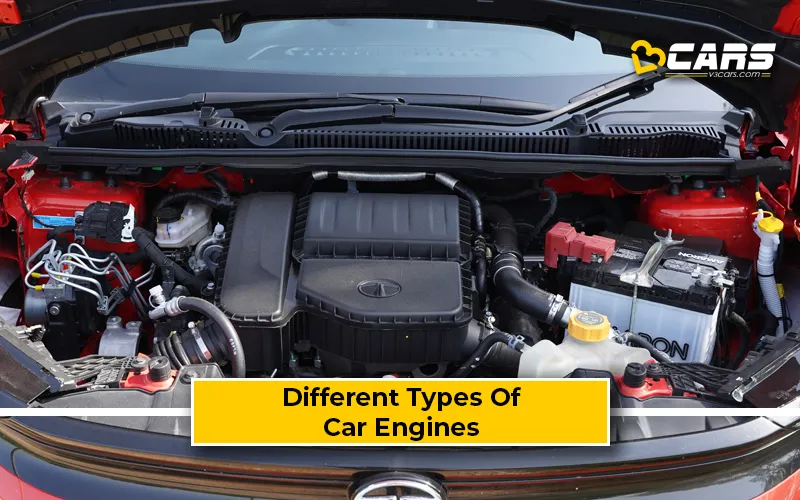Unveiling the Power Within: Exploring Different Types of Car Engines
The heart of any vehicle is its engine, the powerhouse that propels us forward. Over the years, automotive engineering has evolved, giving rise to a variety of engine types, each with its unique characteristics and applications. In this article, we'll dive into the fascinating world of car engines, exploring the different types that drive our vehicles today. From the traditional internal combustion engines to the cutting-edge electric powertrains, we'll shed light on the inner workings, strengths, and applications of each engine type, helping you understand the diverse landscape of automotive propulsion.

Internal Combustion Engines (ICE)
- Petrol Engines: Petrol engines are the most common type in passenger cars. They rely on a spark plug to ignite a mixture of air and fuel to generate power.
- CNG Engines: A CNG engine, short for Compressed Natural Gas engine, is an alternative fuel engine used in some cars and vehicles. It is designed to run on compressed natural gas, which is a cleaner-burning fuel compared to traditional gasoline or diesel. Examples of CNG-powered cars in India include the Tata Punch CNG and Maruti Suzuki WagonR CNG.
- Diesel Engines: Diesel engines are known for their efficiency and torque. They ignite fuel by compressing air in the cylinder, creating a combustion event without the need for spark plugs.
Internal combustion engines come in various sizes and forms, including inline 3-cylinder, inline 4-cylinder, inline 6-cylinder, V6, V8, V10, V12, W16, etc.
Hybrid Engines
- Parallel Hybrid: Parallel hybrid systems combine an internal combustion engine with an electric motor. The 2 power sources can work independently or together to optimise fuel efficiency and reduce emissions. Examples include the Honda City e:HEV.
- Series Hybrid: Series hybrids use an electric motor to generate power, while the internal combustion engine serves solely as a generator to charge the battery. Examples include the BMW i3 and Koenigsegg Regera.
Note: Now Find Out The Fuel Price In India Using V3Cars
Plug-in Hybrid Engines
PHEVs, or plug-in hybrid electric vehicles, offer a larger battery capacity and can be charged externally. They can operate on electric power alone for a limited range before the internal combustion engine kicks in. Examples of plug-in hybrid vehicles sold in India currently include the recently-launched Mercedes-AMG GT 63 S E.
Electric Vehicle (EV)
- Battery Electric Vehicles (BEVs): BEVs are fully electric, powered solely by rechargeable batteries. They produce zero tailpipe emissions and offer quiet, instant torque. Examples include the Tata Nexon EV, MG Comet EV, etc.
- Extended Range EVs: These combine an electric powertrain with a small gasoline generator to extend the vehicle's range beyond what the battery alone can provide. Currently, there are no extended range EVs on sale in India. But a good example of such a vehicle is the Polestar 1.
Rotary Engines
- Wankel Engines: Rotary engines, like the Wankel engine, use a rotor instead of pistons. They are known for their high-revving capabilities and compact design. Cars powered by rotary engines include the Mazda RX7 and RX8.
Car engines are a testament to human engineering innovation, offering a diverse range of options to cater to various needs and preferences. From the traditional internal combustion engines that have dominated for over a century to the cutting-edge electric powertrains shaping the future, the world of automotive propulsion continues to evolve. Understanding the different types of car engines empowers you to make informed choices when purchasing a vehicle, aligning your needs with the strengths of the engine type. As we advance further into the era of electric and hybrid powertrains, the landscape of car engines is sure to witness even more exciting transformations in the years to come.
Note: Instantly Sell Your Old Car With V3Cars Sell Used Car Platform
Also Read: How To Make Tyres Last Longer? Essential Tyre Care Guide



0 Comments